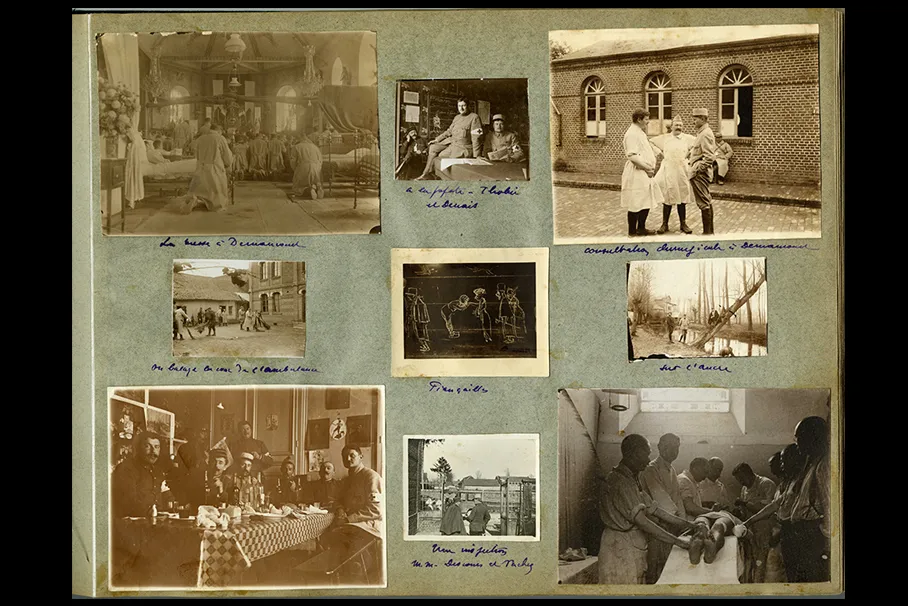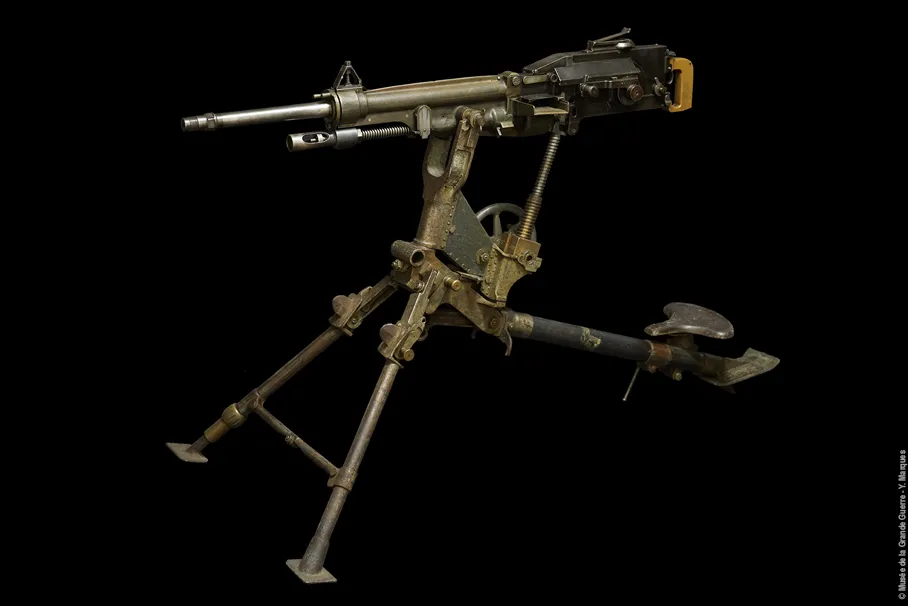
Photo album

This 1907 T machine gun, adopted from 1909, was produced by the national arsenal in Saint-Étienne. It used 8 mm Lebel ammunition, with a firing rate of 600/minute.
Unlike the machine guns of the other major European powers, it did not use a water-based cooling system, relying on air instead. The gun used rigid feed strips, pushed along using a rack and pinion system.
Four men would operate the gun: a corporal, a gunner, a loader and a loader’s assistant. Trench warfare was disastrous for the 1907 T, which was sensitive to mud and dust. It was withdrawn from the frontlines in 1917 and thereafter primarily used against aircraft or in fortifications, safe from dust and dirt.
This impressive weapon and feat of engineering by French arsenals was not suited to modern warfare.
Cross-section of a 75 mm Shrapnel shell (1897 model), Collection d’étude, donation from Centre de Déminage de Versailles.
Characteristics:
The shell is an elongated artillery projectile containing a powder charge to explode, and a destructive charge designed to achieve the desired effects on enemy troops, equipment and defences.
It was the shell that killed and destroyed: it is the arm of the artilleryman, while the gun is merely a delivery system. This Shrapnel shell is the first adopted for the French 75 mm gun. It was designed to explode on its trajectory or, more rarely, upon impact, based on a principle similar to that of a shotgun cartridge containing many lead pellets.
This shell, weighing 7.25 kg, contains 261 bullets weighing 12 g each, and 110 g of black powder loaded at the rear.
Cross-section of a 75 mm explosive shell (1915 model) Collection d’étude, donation from Centre de Déminage de Versailles.
Characteristics :
The 1900 explosive shell produced by the military arsenals represented the main supply at the start of the war but was difficult for private industry to manufacture, in the absence of appropriate machine tools.
It was swiftly replaced by the more easily produced 1914 model, despite that shell’s poorer explosive capacities. A better projectile was needed. The 1915 model was created, based on the 1900 but suited to mass production by civilian industry, particularly of the shell body.
Its dimensions and capabilities were reviewed in order to facilitate production by all possible manufacturers.
The shells, designed to kill, mutilate and destroy, did not always explode. They continue to surface to this day during farming and building work.